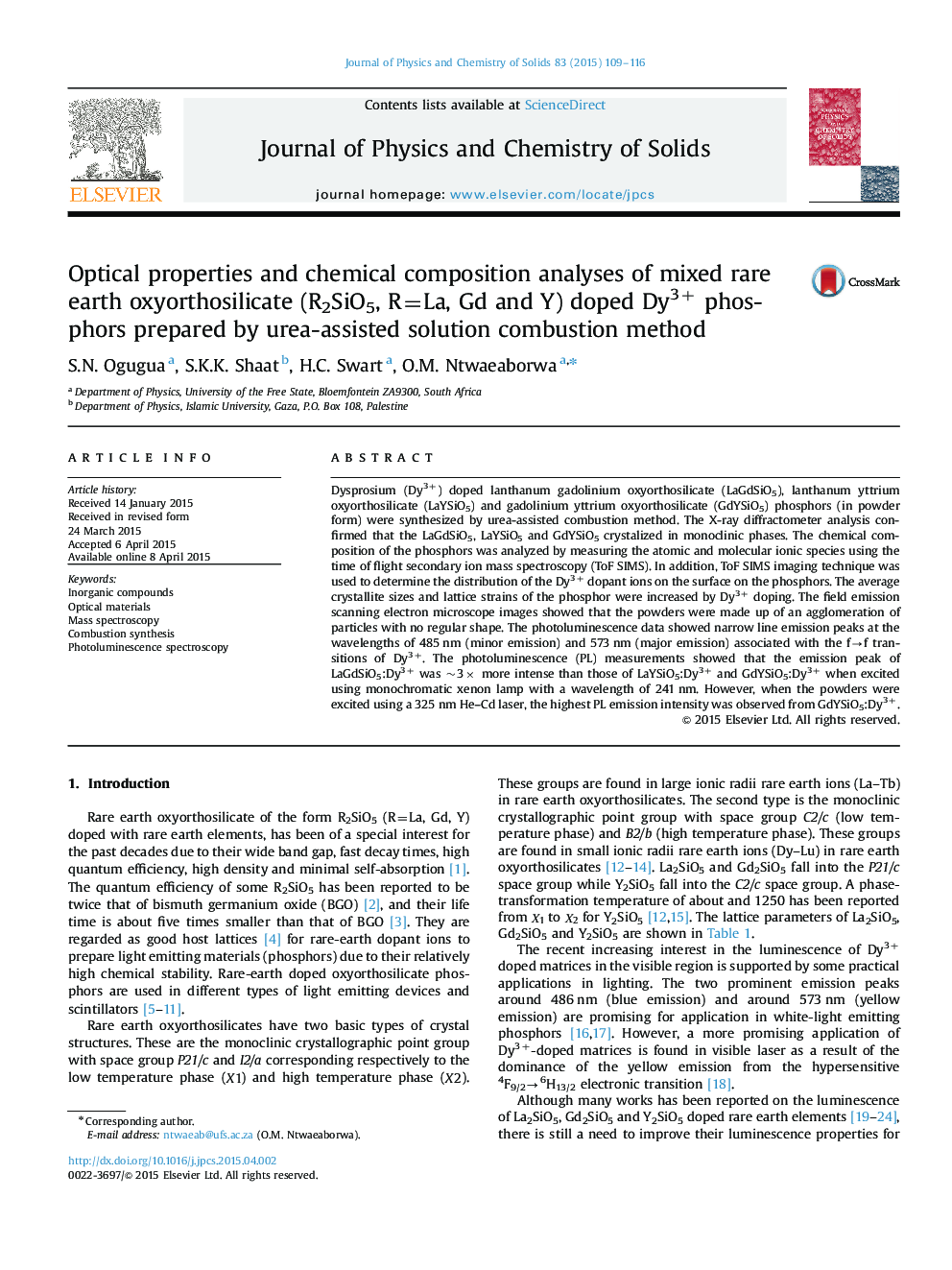| Article ID | Journal | Published Year | Pages | File Type |
|---|---|---|---|---|
| 1515466 | Journal of Physics and Chemistry of Solids | 2015 | 8 Pages |
•The successful combustion synthesis of mixed rare-earths oxyorthosilicates.•The importance of choosing metal with similar ionic radii as rare-earths dopant ions for maximum occupation and improved PL intensity.•Tuneable emission from the same compounds by using different excitation sources.
Dysprosium (Dy3+) doped lanthanum gadolinium oxyorthosilicate (LaGdSiO5), lanthanum yttrium oxyorthosilicate (LaYSiO5) and gadolinium yttrium oxyorthosilicate (GdYSiO5) phosphors (in powder form) were synthesized by urea-assisted combustion method. The X-ray diffractometer analysis confirmed that the LaGdSiO5, LaYSiO5 and GdYSiO5 crystalized in monoclinic phases. The chemical composition of the phosphors was analyzed by measuring the atomic and molecular ionic species using the time of flight secondary ion mass spectroscopy (ToF SIMS). In addition, ToF SIMS imaging technique was used to determine the distribution of the Dy3+ dopant ions on the surface on the phosphors. The average crystallite sizes and lattice strains of the phosphor were increased by Dy3+ doping. The field emission scanning electron microscope images showed that the powders were made up of an agglomeration of particles with no regular shape. The photoluminescence data showed narrow line emission peaks at the wavelengths of 485 nm (minor emission) and 573 nm (major emission) associated with the f→f transitions of Dy3+. The photoluminescence (PL) measurements showed that the emission peak of LaGdSiO5:Dy3+ was ~3× more intense than those of LaYSiO5:Dy3+ and GdYSiO5:Dy3+ when excited using monochromatic xenon lamp with a wavelength of 241 nm. However, when the powders were excited using a 325 nm He–Cd laser, the highest PL emission intensity was observed from GdYSiO5:Dy3+.
